To identify piqué fabric, look for its distinctive raised texture and ribbing patterns that create a unique waffle-like appearance. This fabric is often made from cotton, offering softness and breathability, making it comfortable to wear. You'll notice less stretch compared to standard woven fabrics, which means it works best for structured garments. Piqué also tends to conceal sweat stains thanks to its textured surface, adding to its practicality. If you want to explore additional characteristics and uses of piqué, there's more fascinating information to uncover about this versatile fabric.
Understanding Piqué Fabric
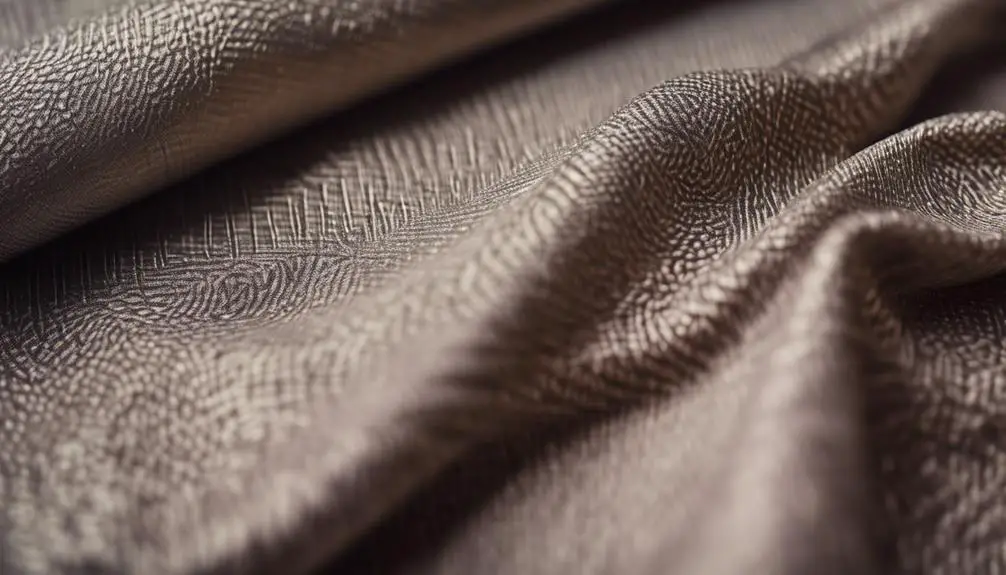
When it comes to understanding piqué fabric, you'll quickly notice its unique characteristics that set it apart from other textiles. This durable cotton knit fabric features a distinctive textured pattern, often showcasing raised parallel cords or geometric designs. These visual elements not only enhance its aesthetic appeal but also contribute to its practical benefits.
One of the standout qualities of piqué is its breathable nature, making it perfect for casual summer wear. The waffle-knit structure allows air to circulate, ensuring you stay cool in warm climates. Additionally, piqué fabric excels in moisture absorption, which helps wick away sweat more effectively than smoother woven fabrics like jersey. This means you can enjoy activities without worrying about perspiration stains ruining your look.
You'll also find variations of piqué, such as baby piqué, double piqué, and micro piqué, each differing in weight and texture. This versatility allows piqué to be used in various clothing applications, from classic polo shirts to more formal attire. Understanding these aspects will help you appreciate the fabric's widespread popularity.
Key Characteristics of Piqué
Piqué fabric boasts several key characteristics that make it a popular choice in the textile world. One of the most notable features is its unique textured surface, which is created by raised parallel cords or fine ribbing. This gives pique a waffle-like appearance that's both visually appealing and distinct.
Typically made from cotton, pique fabric is known for its durability and breathability, making it ideal for various garments. It effectively conceals perspiration stains, which is particularly beneficial for those hot days. You'll find pique in different types, such as baby pique for soft baby products and French pique, which offers a premium silky feel.
The unique construction of pique utilizes a double weave or a cross-tuck knit pattern, contributing to its resilience against wear and tear. This means your garments will maintain their shape over time. Piqué is most commonly associated with polo shirts, but it's also suitable for formal cotton shirts, making it versatile for both casual and semi-formal attire. When you choose pique, you're opting for a fabric that combines style with practicality.
Common Uses of Piqué
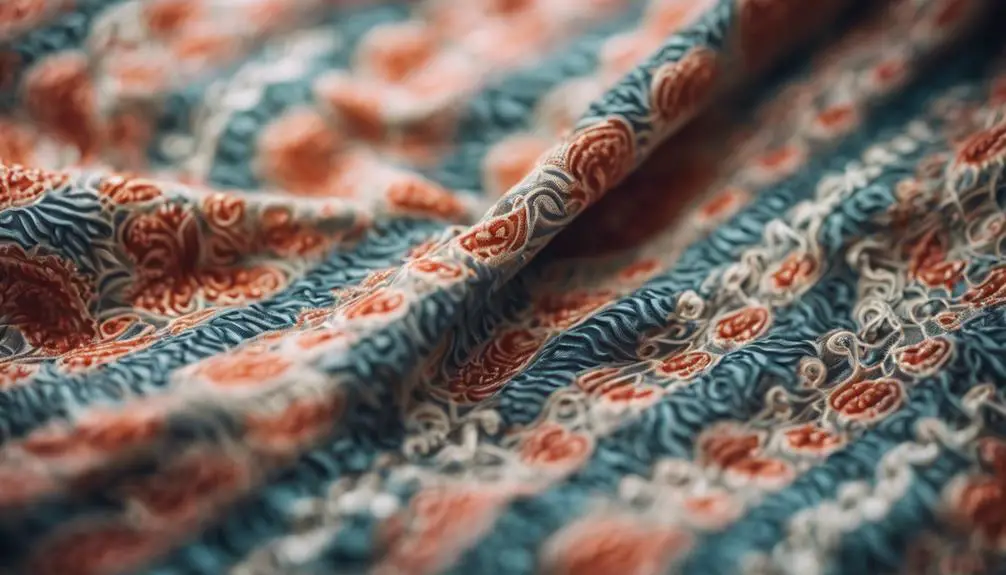
You'll find piqué fabric widely used in various clothing items, particularly polo shirts, which gained fame through brands like Lacoste™. This knit cloth, often made from cotton, is ideal for sportswear due to its breathable qualities. When you wear a piqué polo, you benefit from its textured weave that not only adds visual interest but also helps conceal perspiration stains, making it perfect for both casual outings and semi-formal events.
In addition to polo shirts, piqué fabric finds its way into formal wear, such as tuxedo shirts and bow ties, enhancing elegance while maintaining comfort. The versatility of piqué extends beyond apparel; you might also encounter it in home textiles like tea towels and bathrobes. This adaptability showcases piqué's ability to blend style with functionality, whether you're on the golf course or enjoying a cozy night in.
Ultimately, piqué fabric's unique features make it a go-to choice for a range of uses, ensuring you always look polished and feel comfortable, no matter the occasion. So, keep an eye out for this fantastic fabric in your wardrobe!
Manufacturing Processes of Piqué
The manufacturing processes of piqué fabric involve intricate weaving techniques that create its signature texture and durability. This cloth is traditionally made using a high quality, double weave technique, which employs two warps and two weft threads. This method not only provides strength but also allows for the incorporation of raised and recessed patterns, enhancing its visual appeal. In the textile industry, you'll find variations in the manufacturing process, leading to different types of piqué such as baby piqué, double piqué, and micro piqué. Each type is suited for specific applications, reflecting varying quality levels.
For a slightly less dense fabric with some texture, manufacturers may use a semi-piqué technique, combining two warps and one weft thread. However, beware of fake piqué, which is constructed with just one warp and one weft thread. This results in a fabric that lacks the characteristic depth and quality of true piqué fabrics, failing to deliver the rich texture you expect. When sourcing piqué, always look for that intricate weaving and texture that sets genuine piqué apart, often made from cotton yarn for added comfort and durability.
Care and Maintenance Tips
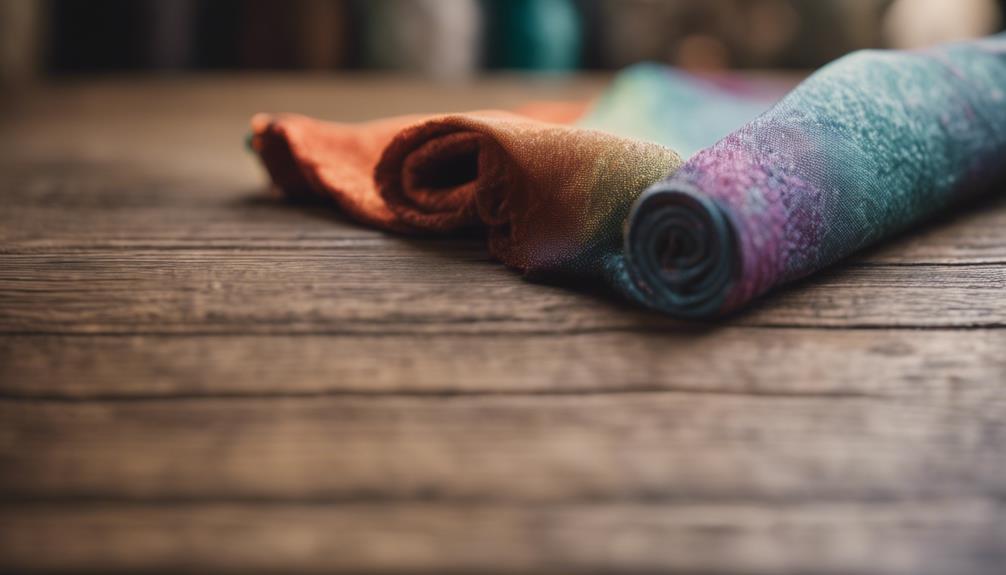
Maintaining the quality and appearance of piqué fabric is straightforward, thanks to its durable nature and easy-care properties. You can effectively wash piqué at home without special treatment, typically in cold water to preserve its color and texture. Regular washing is safe, as this fabric can withstand repeated cycles without damage or loss of shape.
To keep your piqué looking its best, it's essential to group similar colors during laundry. This helps prevent dye transfer, ensuring your garments remain vibrant. When it comes to drying, use a low tumble dry setting. Once the cycle's over, promptly remove your items to minimize creasing, since piqué doesn't wrinkle easily due to its knit construction.
If you need to remove stains and odors, tackle them promptly using a mild detergent. Most stains can be handled with regular washing, but for tougher spots, consider pre-treating them before laundering. Overall, with a little care, you can maintain the integrity of your piqué fabric and enjoy its benefits for years to come.
Styling Dos and Don'ts
Piqué's unique texture offers plenty of styling opportunities, but knowing how to wear it can make all the difference. When you're styling with piqué, consider combining it with smooth, flowing fabrics to create a balanced and casual look. This enhances both comfort and visual appeal. For an elegant touch, pair your piqué cotton shirt with shiny fabrics; the textured surface will contrast beautifully against the sleekness of these materials.
If you're aiming for a sporty outfit, opt for matte materials like jersey or denim. These fabrics complement piqué's structure without clashing visually. However, avoid an all-over piqué look, as it can lead to a lounge-wear appearance. Instead, highlight piqué as a detail within your outfit for a more sophisticated effect.
Layering is another great way to incorporate piqué. Use it as part of a layered outfit, allowing its unique texture to add depth without overwhelming your overall style. By following these dos and don'ts, you can effortlessly style piqué to achieve both sporty and elegant looks, ensuring you're always dressed to impress.
How to Identify Piqué
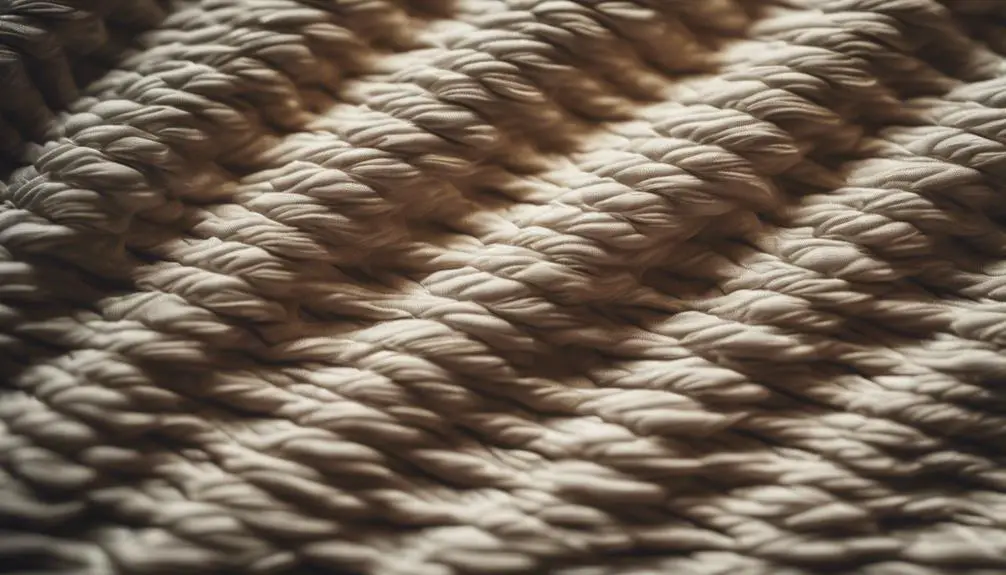
When you're exploring different fabrics, identifying piqué can enhance your styling choices. This fabric is known for its unique raised texture, often resembling a waffle-like or honeycomb pattern. Unlike smoother fabrics like jersey knit, piqué features a distinct weave that utilizes a double knit technique, which creates noticeable ridges or cords.
To identify piqué, look closely for those subtle geometric designs. One of its practical benefits is the ability to conceal perspiration stains thanks to its textured surface. You'll typically find piqué made from cotton, ensuring a soft and comfortable feel, so checking the labels for cotton content is a smart move.
Another key aspect of piqué is its less stretchy feel compared to standard woven fabrics. This characteristic makes it ideal for structured garments, such as polo shirts and formal wear. By learning to spot these features, you can confidently incorporate piqué into your wardrobe, ensuring you choose the right fabric for your needs. Remember, a fabric's texture and structure can greatly impact both style and comfort, making identification a useful skill in your fashion toolkit.
Comparison With Other Fabrics
Identifying piqué fabric in your wardrobe can help you appreciate its unique qualities compared to other materials. Piqué stands out with its textured, waffle-like surface, making it more breathable than jersey fabrics. This enhanced airflow is perfect for sportswear, especially in warm weather when comfort is essential. Vintage clothing enthusiasts often seek out piqué for its durability and distinct texture, which can be linked to specific vintage clothing trends that highlight the fabric's appeal.
When you compare piqué to smoother fabrics like silk or cotton broadcloth, you'll notice the raised parallel cords or fine ribbing that give piqué its distinct look and feel. This texture not only adds aesthetic appeal but also contributes to its durability.
If you've encountered Lacoste fabric, you might see piqué's V-shaped texture in contrast to Lacoste's beehive-like loops, showcasing different manufacturing techniques.
One of the practical advantages of piqué is its resistance to visible perspiration stains. Unlike jersey fabrics, which can easily show sweat marks, piqué keeps you looking fresh and clean during active moments. So, next time you're choosing between fabrics, consider piqué for its breathability and texture, especially if you're planning on wearing it in warmer conditions or while engaging in sports.
Frequently Asked Questions
How to Identify Pique Fabric?
To identify piqué fabric, check for its unique raised texture and geometric patterns. Feel its firm, slightly textured surface, and notice how it drapes. Compare it to smoother fabrics—piqué's structure and breathability set it apart.
What Is the Difference Between Single Lacoste and Double Lacoste?
Single Lacoste's lighter, breathable texture suits casual wear, while Double Lacoste offers a thicker, more structured look, perfect for both casual and slightly formal settings. You'll notice the price difference reflects this added durability.
What Is the Difference Between Single Pique and Double Pique?
Single pique uses one warp and weft thread, making it lighter and smoother. Double pique, with its two threads, results in a thicker, more durable texture, ideal for formal wear and offering better breathability.
What Are the Characteristics of Birds Eye Pique Fabric?
Birds Eye pique fabric's distinctive texture features small raised dots, offering a unique look and feel. It's breathable, durable, and moisture-wicking, making it perfect for warm weather, sportswear, and casual attire. You'll love its versatility!
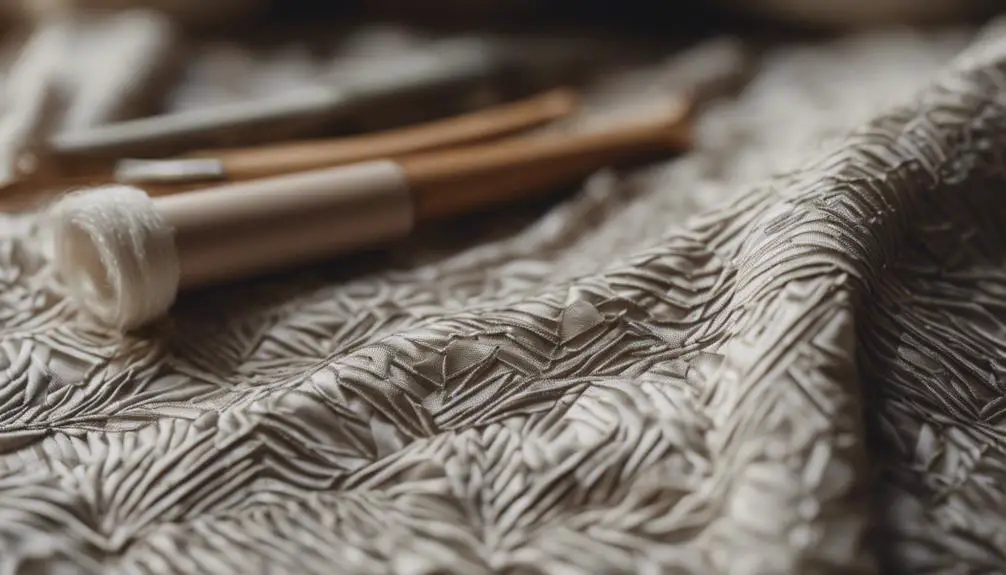

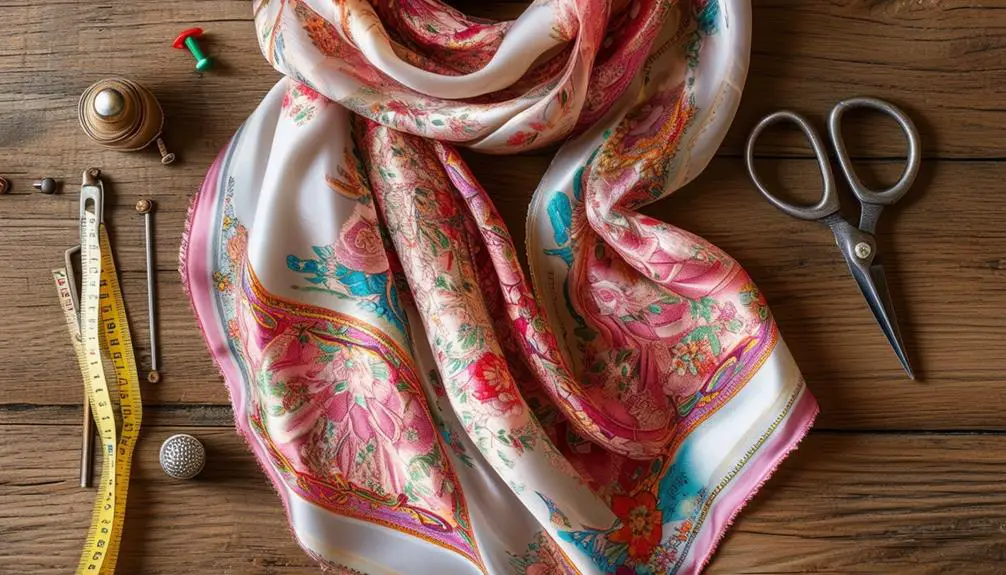
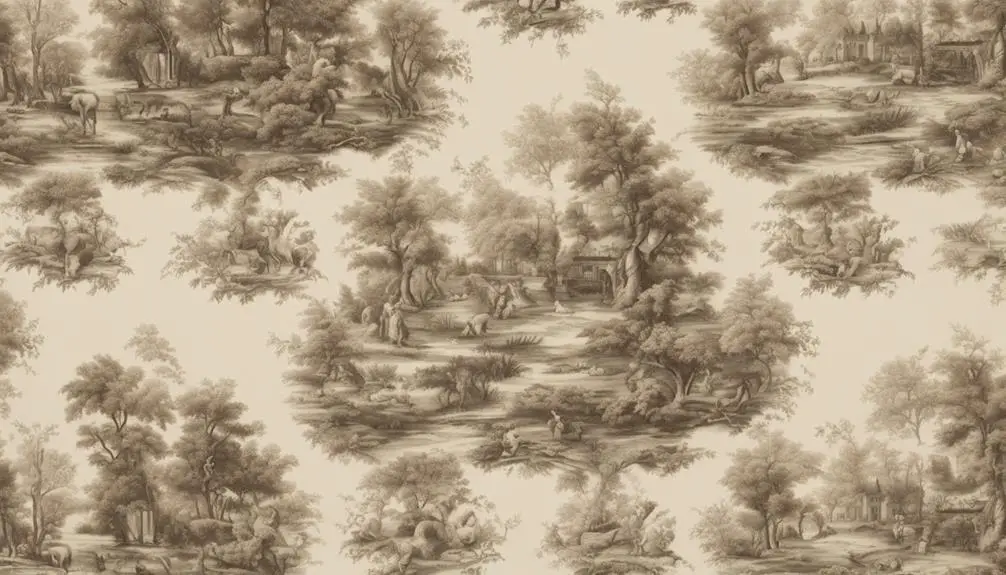

Thanks for sharing. I read many of your blog posts, cool, your blog is very good.
Thank you for your sharing. I am worried that I lack creative ideas. It is your article that makes me full of hope. Thank you. But, I have a question, can you help me? https://www.binance.info/it/join?ref=S5H7X3LP